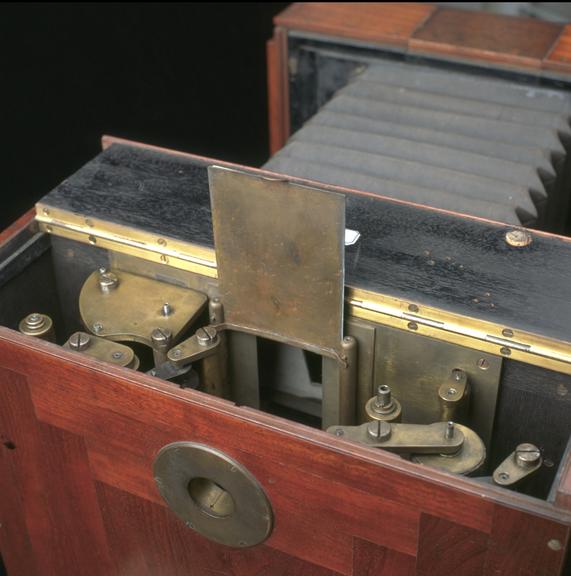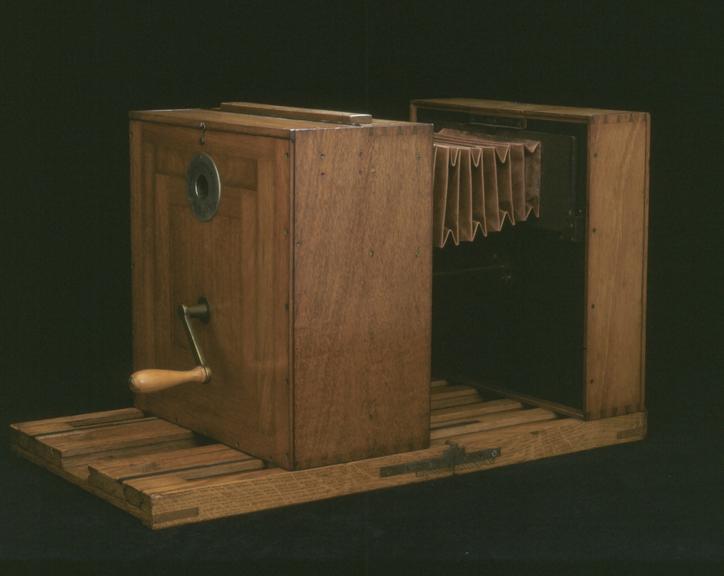







Etienne Jules Marey's Chrono-photographic camera, without lens (B3030), 1890.
This camera was used to take sequential images on a single, static photographic plate or on strips of celluloid film. The physiologist Etienne-Jules Marey (1830-1904) pioneered the use of photography to record and analyse movement. This camera (which lacks a lens) used celluloid film, introduced by George Eastman in 1889, and was the first to demonstrate the essential characteristics of a cine camera - exposing a series of still images on a ribbon of film, which was moved intermittently between exposures.
Details
- Category:
- Cinematography
- Collection:
- Sir Henry Wellcome's Museum Collection
- Object Number:
- 1981-894
- Materials:
- wood (unidentified), metal (unknown), glass and fabric
- Measurements:
-
overall: 410 mm x 410 mm x 695 mm,
- type:
- chronophotographe
- credit:
- Wellcome Trust




